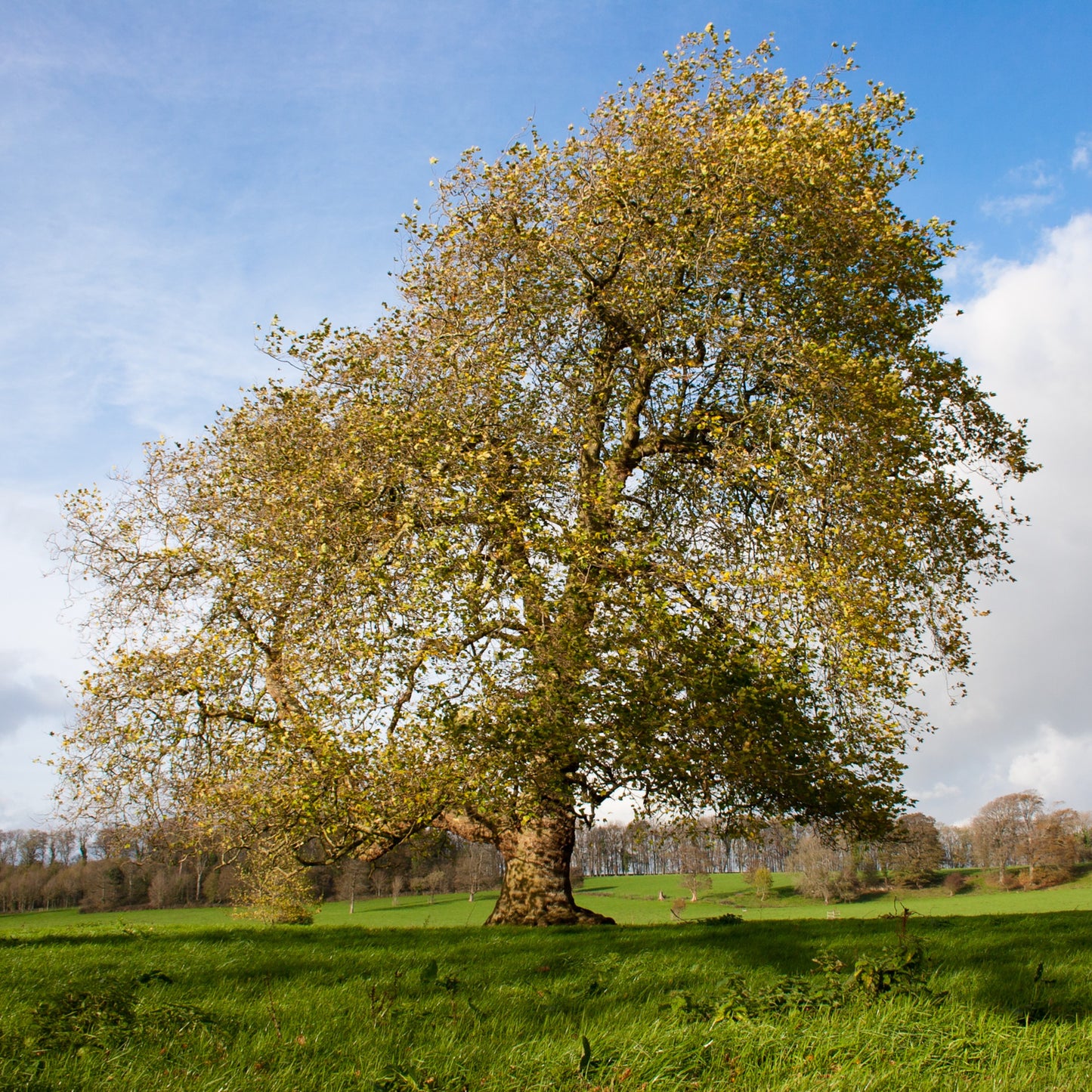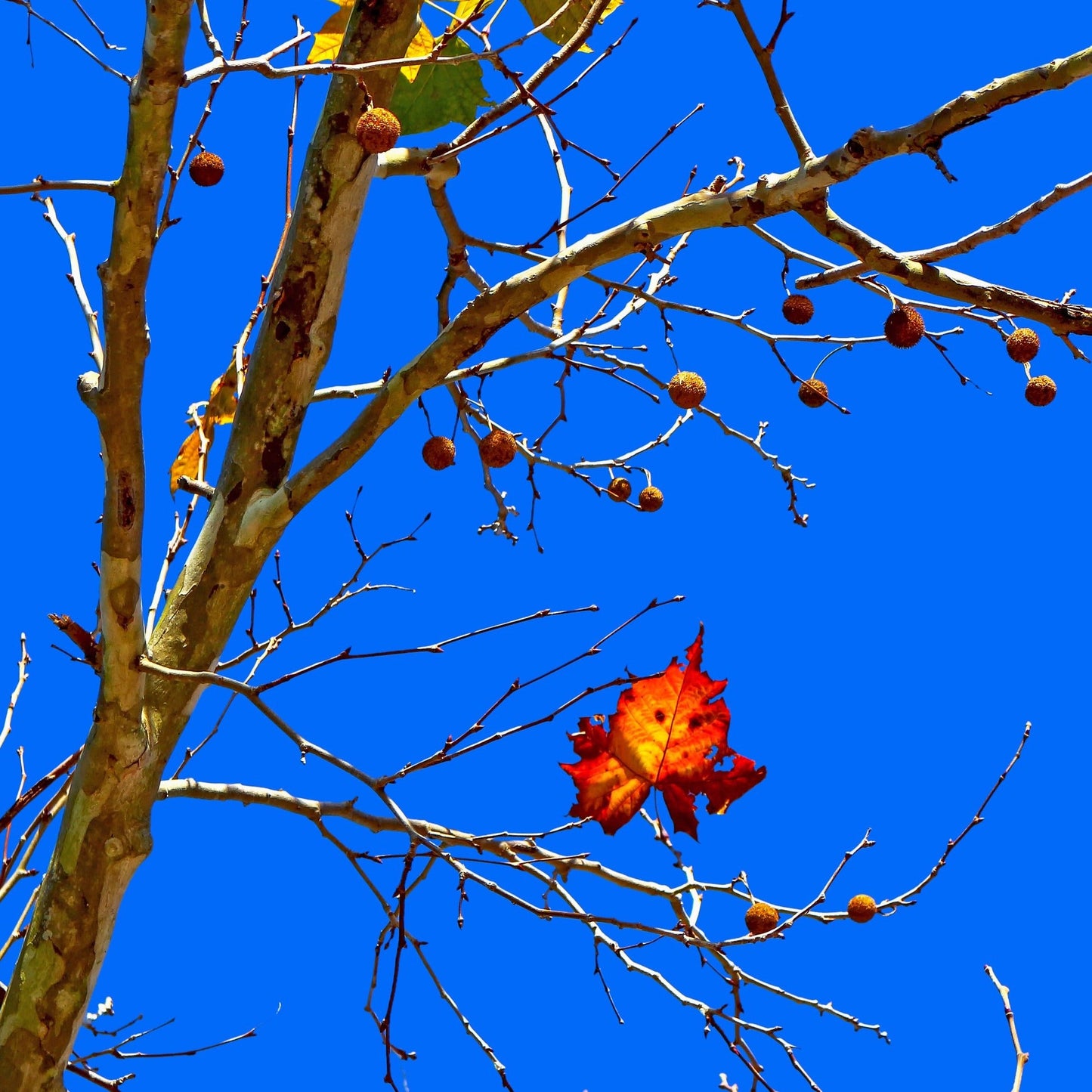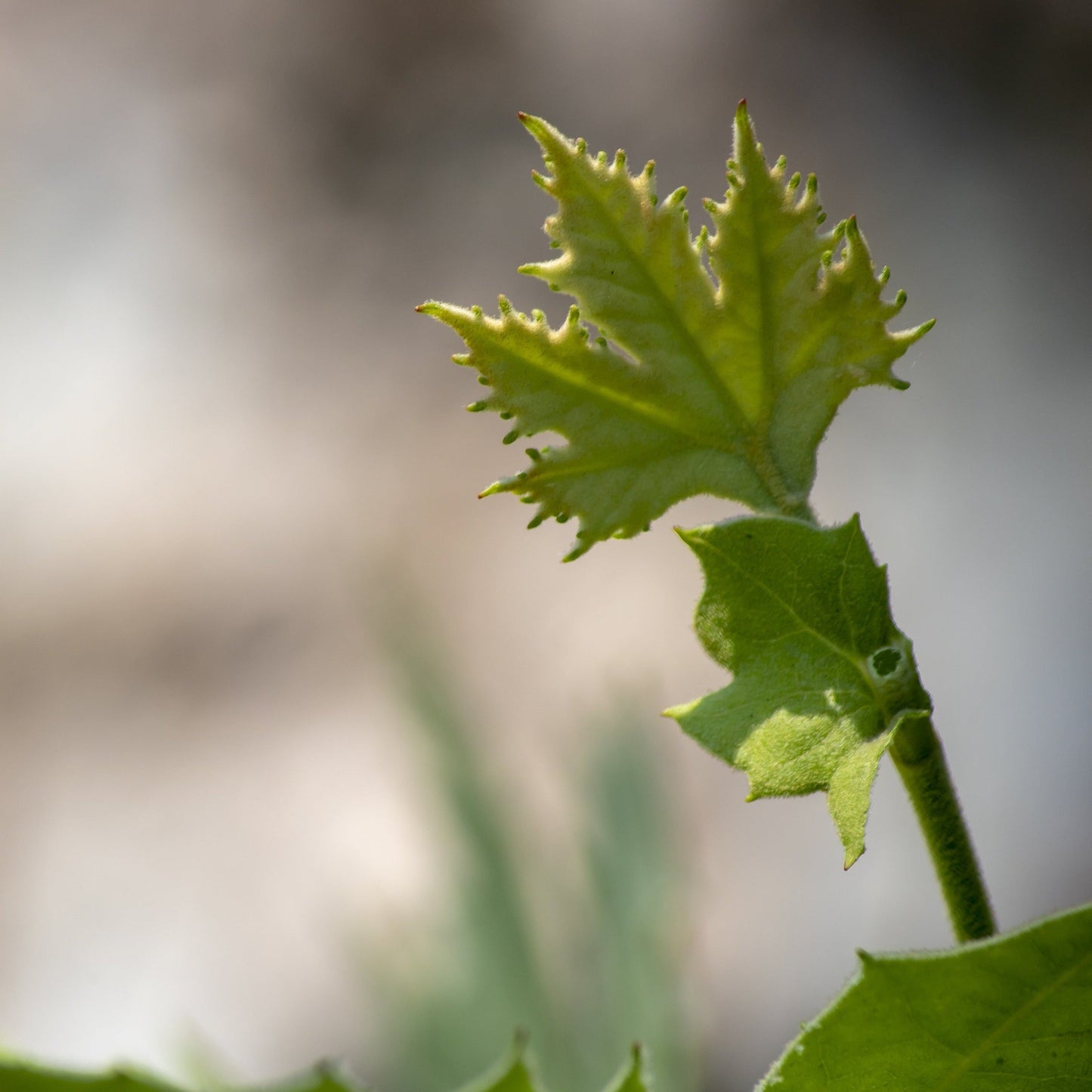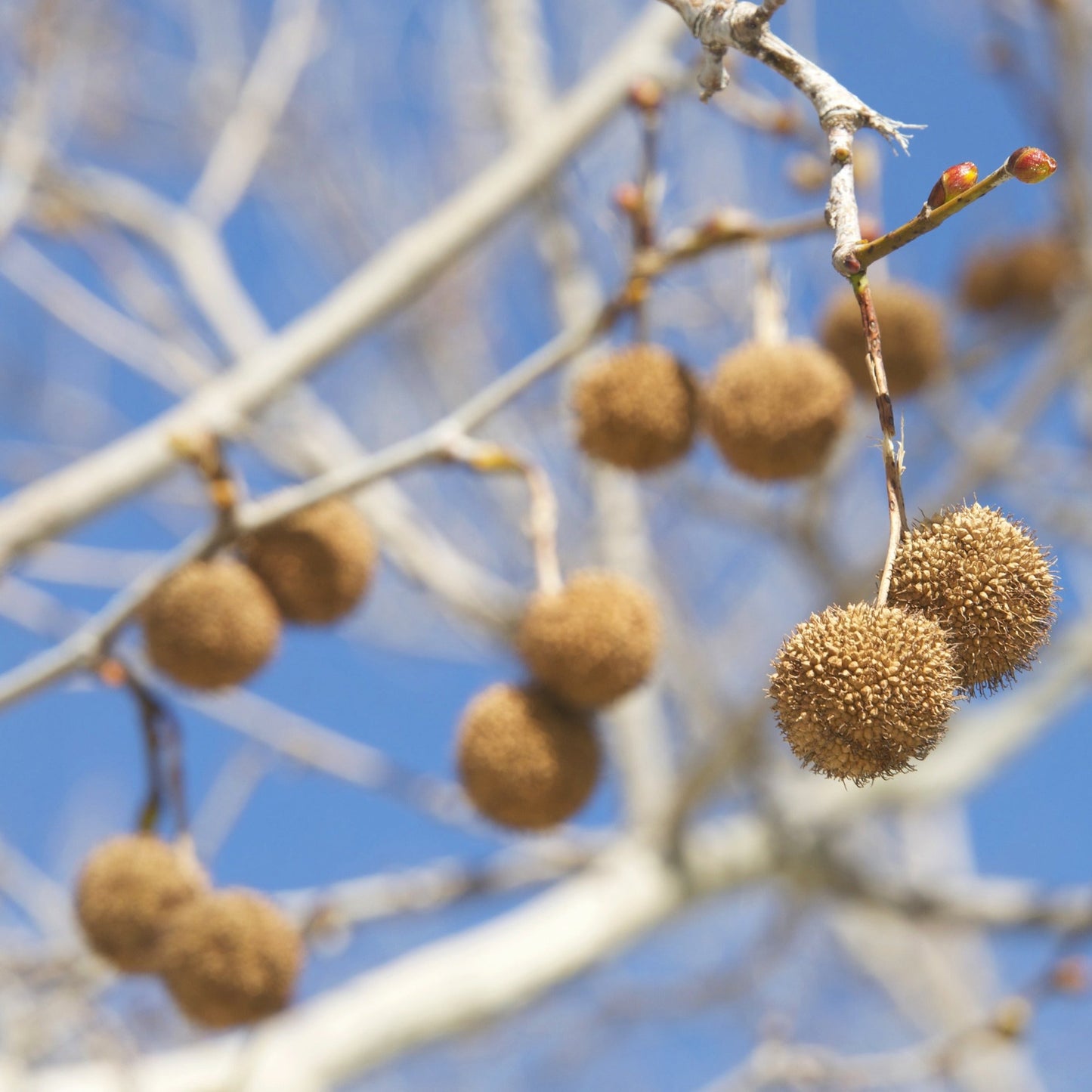Limited Quantities - Reserve Now For Fall
American Sycamore Tree
American Sycamore Tree
Couldn't load pickup availability
Platanus occidentalis
The Sycamore Tree is a fast-growing, long-lived deciduous tree known for its towering height, unique mottled bark, and broad, spreading canopy. A native North American shade tree, the Sycamore thrives in varied soil conditions and is highly valued for its adaptability, environmental benefits, and stunning presence in landscapes. With strong resistance to urban pollution and excellent erosion control properties, this low-maintenance tree is ideal for shade, windbreaks, and large-scale plantings.
Sycamore Tree
| Attribute | Details |
|---|---|
| Variety | Rooted |
| Botanical Name | Platanus occidentalis |
| Common Names | Sycamore, American Sycamore, Buttonwood, Plane Tree |
| Mature Height | 75-100 feet (can exceed 130 feet in ideal conditions) |
| Mature Width | 50-80 feet |
| Growth Rate | Fast (2-4 feet per year) |
| Lifespan | 200-400 years |
| USDA Hardiness Zones | 4-9 |
| Sun Preference | Full sun (6+ hours of direct sunlight) |
| Soil Type | Well-drained, loamy, sandy, or clay soils |
| Soil pH | Slightly acidic to neutral (5.0-7.5) |
| Water Needs | Moderate to high; thrives in moist soils but tolerates drought once established |
| Fall Foliage | Yellow to golden brown |
| Wildlife Attraction | Birds, small mammals, pollinators |
| Growth Habit | Broad, spreading canopy with a strong, sturdy trunk |
| Self-Pollinating? | Yes |
| Landscape Uses | Shade tree, windbreak, erosion control, urban landscapes, parks |
| Maintenance Level | Low to moderate |
Environmental Benefits
🌳 Shade Provider & Cooling Effect – With its wide, dense canopy, the Sycamore offers exceptional shade, reducing temperatures in urban and residential areas.
🌍 Air Purification & Pollution Tolerance – Absorbs carbon dioxide and airborne pollutants, making it an excellent tree for improving air quality.
💧 Erosion Control & Soil Stability – Thrives in riverbanks, wetlands, and flood-prone areas, helping prevent soil erosion and improving water retention.
🐦 Wildlife Habitat – Provides shelter and nesting sites for birds, while its seeds and bark attract small mammals and pollinators.
Pros & Cons
| Pros | Cons |
|---|---|
| Fast-growing and provides excellent shade | Large size requires plenty of space to grow |
| Highly adaptable to different soil types and climates | Heavy leaf and bark shedding can create cleanup work |
| Resistant to pollution, pests, and diseases | Can develop surface roots that interfere with sidewalks and foundations |
| Tolerates flooding and helps stabilize soil | Not ideal for small yards due to its massive growth potential |
| Distinctive peeling bark and ornamental value | May experience occasional anthracnose disease, though not fatal |
Planting & Care Guide
- Spacing: Plant 50-80 feet apart for full canopy development
- Soaking: Soak bare root in water for 6-12 hours before planting
- Planting Depth: Dig a hole twice the width of the root system, ensuring roots are level with the soil surface
- Mulching: Apply a 2-3 inch layer of mulch to retain moisture and suppress weeds
- Pruning: Prune in late winter to early spring to remove weak branches and improve structure
- Fertilization: Apply a balanced fertilizer in early spring to encourage strong growth
- Watering: Water regularly in the first year, then reduce frequency as the tree matures
The Sycamore Tree is a majestic, fast-growing tree that provides cooling shade, environmental benefits, and stunning ornamental beauty. Whether planted for large landscapes, parks, or along riverbanks, this resilient and long-lived tree is a valuable investment for generations to come.
Share








